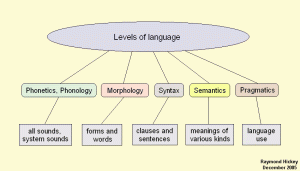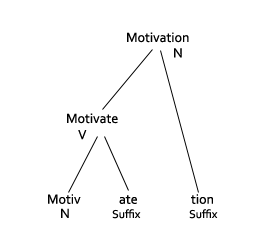
In spite of big limitations, the study of semantics has made an important contribution to our understanding of how languages work.

Originally, the term semantics did not refer to the study of meaning in language; it referred to how the meanings of words can change over time; it was about meaning development rather than simply meaning. Today, we call this historical semantics. There are lots of examples of this kind of change, of course. Think about how words like “wicked” are used by young people today.

The word semantics did not really catch on until the 1920s when Richards and Ogden published their famous book, The Meaning of Meaning. Today, Semantics is one of the central areas of study in Linguistics. After all, the whole purpose of language is to communicate meaning.

Meaning is of central importance to language learners and teachers because it is assumed that languages are learned in the process of communication.

Meaning is bound up with just about everything connected with language. Meaning is deeply influenced by the sound system of a language, its grammatical structure, and the way we use language in actual conversations.

For example, Phonology is the study of the sound system of language. Obviously, sounds (phonemes) can distinguish meanings: “pin” does not mean the same as “bin” and “ship” means something completely different than “sheep.”

Also, stress can change the meaning of words and sentences in big ways: the word “contrast” has a different meaning depending on whether you stress the first of the second syllable and a simple sentence like “I didn’t eat the apple” has a different interpretation if certain words are strongly stressed. Furthermore, tone can indicate a question sentence rather than a declarative sentence.

Morphology studies the internal structure of words and how words are built up out of smaller components. For example, adding “-ed” to a verb makes it refer to the past. Adding “-ate” to a noun like “motive” changes it into a verb. Compound affixes such as “-boy” and “-girl” give their meaning to words like “school-boy” and “school-girl.”

Syntax deals with the way words combine to form larger phrases and sentences. Semantics is concerned with how those phrases and sentences are interpreted — their meaning. For a very simple example, take a sentence like “The rat ate the cockroach.” Then swap around the words so you get “The cockroach ate the rat.” Clearly the meaning (interpretation) is different depending on the word order.

Pragmatics, like Semantics, is also concerned with the transmission of meaning through language. However, Pragmatics investigates the meanings that expressions have in particular situations (contexts). For example, a sentence like “It’s hot in here” carries the meaning that the temperature is high. However, in context, it could easily be taken as a request to open the window or turn the heater off. In other words, “It’s hot in here” implies something else, not just that the temperature is high.

Obviously, the way we stress words is an important factor in different contexts. Go back to the sentence “I didn’t eat the apple” and stress different words again. Then think how the context might change your interpretation of the sentence depending on which words you stress. Also, think about a sentence like “The cockroach ate the rat.” How might you interpret that in a particular situation that you can imagine?
Sem4 from Hywel Evans
Sem5 from Hywel Evans
Sem6 up from Hywel Evans